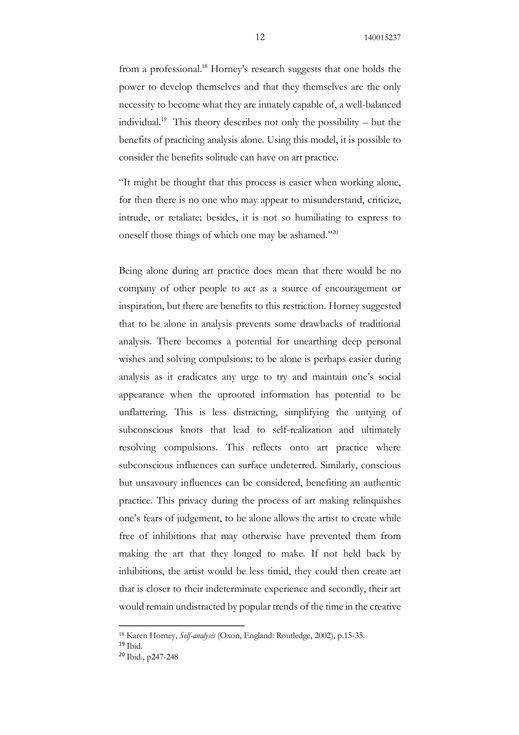Dissertation
Abstract
20th century German psychoanalyst Karen Horney suggested that we all have the innate capability for full self-realisation, given suitable conditions.[1] She introduces this proverbial theory in ‘Neurosis and Human Growth: The Struggle Toward Self-Realization’[2] with a metaphor entailing the acorn’s intrinsic potential to become an oak tree.[3] Using Horney’s practice towards exposing the circumstances in which one can fully reach their potentialities, it is possible to draw comparison to the capacity that art practice has to flourish and reach full realisation under two proposed structures of temporary circumstances. The initial ejection of the artist from their usual circumstance allows distance for the conditions of growth. The conditions that I suggest aid the process of art practice are at two extremes of social conditions; firstly, the retreat into isolation and secondly, the immersion into a community. If the oak tree is to thrive, growing tall and healthy with branches and leaves, it requires the correct environment. This is an affirmative account, sustaining that the correct environment for art practice can actualise the innate potentialities of an idea fruitfully. Isolation offers internal reflection in a limiting structure, immersion into a community offers renunciation of the self in a liberating structure.
[1] Karen Horney, Neurosis and Human Growth: The Struggle Toward Self Realization. (New York: Routledge & K. Paul, 1951), p.13
[2] Ibid.,
[3] Ibid.,p.17
Copies available on request

















